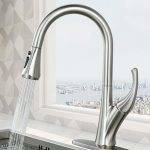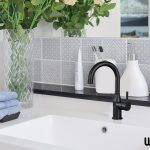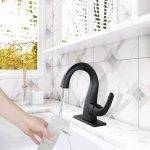It is inevitable to encounter some leaking or broken faucets in household life. This requires repairing the faucets. It is best to find professional maintenance personnel directly, but it will reduce the maintenance cost. The compilation summarizes the faucet maintenance methods and techniques, and shares them for everyone to learn and understand:
Faucet repair process:
Determine the reason for faucet repair-prepare repair tools-close the main sluice-repair or replace the faucet-reinstall-open the sluice test-clean the site
Faucet repair tools:
Screwdriver, adjustable wrench, waterproof tape, etc.
Faucet common problems and maintenance methods:
1: The water faucet has a fork or the water volume is reduced, no bubbles
Possible cause: The filter of the bubbler is clogged with dirt or debris and scale
Solution: Remove the faucet and clean the filter
2: The shower has a small amount of water and a fork
Possible reasons: Low water pressure or clogged or scale accumulation in the shower head
Solution: Remove the shower nozzle and take out the rubber gasket with filter screen at the shower inlet or clean the shower head spray
3: The body is noisy when the faucet
Possible causes: The water pressure is too high; the faucet handle is closed rapidly; the hot and cold water pipes are not fixed well; there is obstruction or scale in the water inlet pipe.
Solution: Reduce the water supply pressure, avoid closing the faucet quickly, rebuild, clean the pipes, and check whether the water pipes and connected objects (such as water purifiers, water heaters) are in poor contact.
4: Temperature adjustment is not easy and the water temperature often changes
Possible reasons: The pressure difference between the cold and hot water is too large, or the water heater takes too long to increase the water temperature
Solution: Turn down the hot and cold triangle valve to balance the pressure and ensure that the water temperature of the water heater can keep up with the water outlet speed
Hot and cold faucet repair:
1. If the hot and cold water faucet is controlled by a main water inlet valve, close the main valve. When the hot and cold water inlet pipes are separated, then close the two corresponding valves.
2. Use a flat-blade screwdriver to open the accessory “01 hot and cold mark (fix the screw hole plug with the handle)”;
3. Use a flat-blade screwdriver to reach into the handle fixing screw hole plug (cold and hot marked hole), and the counterclockwise (left-handed) screwdriver about 3 turns;
4. Fully grasp the faucet handle with your left hand, push it upwards, and at the same time use the screwdriver’s rear handle (must be non-metallic, otherwise it will damage the outer surface of the faucet) and gently tap upwards, so that the accessory “02 water outlet handle” is separated;
5. Counterclockwise (left-handed) fitting “03 end cap”, the end cap is separated from the main body;
6. Place the beginning of the adjustable wrench at the hexagonal position of the accessory “04 core body tightening hexagonal sleeve”, adjust the size of the beginning of the adjustable wrench, turn it counterclockwise, remove the ceramic valve core for inspection, if it is intact, turn it clockwise (right rotation), tighten Stop the upper strength; if damaged, replace the new valve core.
7. Reinstall the accessories “03 end cap”, “02 water outlet handle”, and “01 hot and cold label (note that red represents the hot water side, and blue represents the cold water side)”
Push type faucet repair:
1. Remove the handle and check the parts of the faucet. Use large slip joint pliers or an adjustable wrench to remove the packing nut, being careful not to scratch the metal. Turn the spool or shaft in the same direction as when you turned on the faucet to unscrew them.
2. Remove the screws holding the washer. If necessary, use penetrating lubricant to loosen the screws. Check the screws and valve core, and replace them if they are damaged.
3. Turn off the water supply, and remove the small screws on or behind the faucet handle to remove the handle fixed on the faucet body. Some screws are hidden under metal buttons, plastic buttons, or plastic sheets, which snap into or screw into the handle. As long as you turn on the button, you will see the handle screw on the top. If necessary, use some penetrating lubricant like WD-40 to loosen the screws.
4. Replace the old washer with an identical new washer. New washers that almost exactly match the old washers generally keep the tap from dripping. You should also pay attention to whether the old gasket has a bevel or flat, and replace it with the same new gasket. A gasket designed only for cold water will swell violently when hot water flows through it, blocking the water outlet and slowing down the flow of hot water. Some gaskets can work in hot and cold water, but you have to make sure that the gasket you buy for replacement is exactly the same as the original one.
5. Fix the new washer to the valve core, and then reinstall the parts in the faucet. Rotate the spool clockwise. After the spool is in place, reinstall the packing nut. Be careful not to scratch the metal with the wrench.
6. Reinstall the handle and put the button or disc back. Turn on the water supply again and check for leaks.
 WOWOW Faucets
WOWOW Faucets
-2-150x150.jpg)




您好!Please sign in